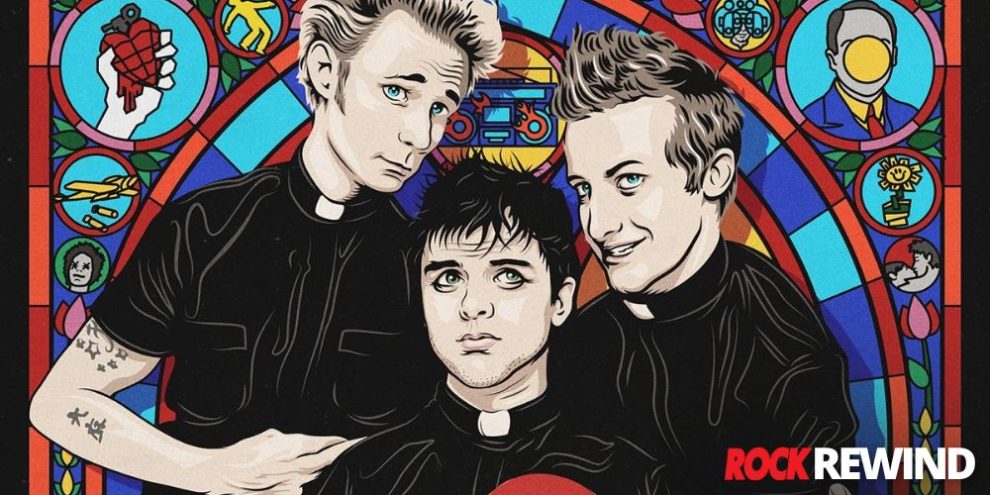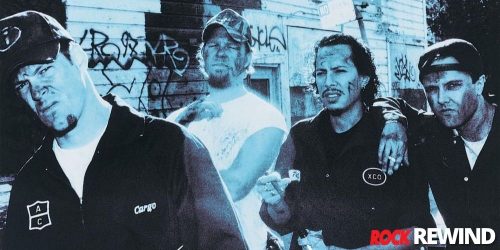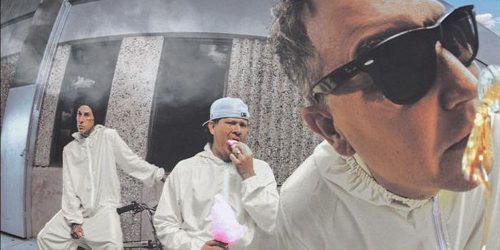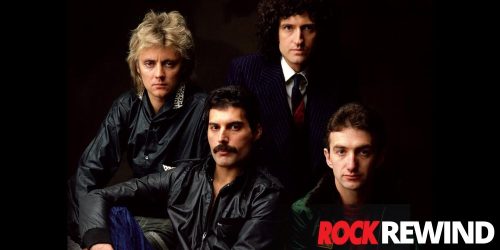Rock Rewind: How Green Day Made Punk Rock Mainstream

Green Day was born out of the Bay Area punk scene that started up at the Alternative Music Foundation (better known as Gilman) in Berkeley, California.
Over the years, they’ve been credited with popularizing mainstream punk rock alongside other bands like Rancid, Bad Religion and The Offspring. They’ve also been voted the Best Punk Rock Band of All Time with their songs and albums regularly making it to “best of” lists.
With over 75 million records sold worldwide, Green Day is one of the highest-selling artists ever.
Let’s take a look at their story …
How Green Day Got Their Name
Originally Sweet Children, Green Day changed the band’s name in 1989. Their label felt that there would be confusion between them and another local group called Sweet Baby.
The band chose Green Day, which was slang in the Bay Area for doing nothing all day but smoking weed. In 2001, Armstrong told VH1 that he felt it was “the worst band name in the world.”
Green Day Band Members
In 1987, Billie Joe Armstrong and Mike Dirnt formed Sweet Children when they were just 15 years old. At this time the band had four members, with Dirnt on guitar and Armstrong on vocals, Sean Hughes on bass and Raj Punjabi on drums.
In 1988, Punjabi was replaced by John Kiffmeyer and Dirnt took over for Hughes who also left the band. When the owner of Lookout! Records saw the band playing, he signed on the trio. The following year, Sweet Children changed their name and released their first EP.
In 1990, the band released their debut album with Lookout! Records and went on a tour of the US. It was soon after the tour that Kiffmeyer left the band. He moved to Arcata to attend Humboldt State University.
Tré Cool, formerly of The Lookouts, came on as Kiffmeyer’s temporary replacement but later became a permanent member. Aside from Jason Stint becoming a full-time member of Green Day from 2012 to 2016, the band’s lineup has remained the same for the last three decades:
- Billie Joe Armstrong – lead vocals and guitar
- Mike Dirnt – bass and vocals
- Tré Cool – drums and vocals
Green Day Discography
Since 1990, Green Day has put out:
4 live albums – Bullet In A Bible (2005), Awesome As Fuck (2011), Woodstock 1994 (2019) and BBC Sessions (2021)
1 soundtrack – American Idiot: The Original Broadway Cast Recording (2010)
5 box set albums – The Green Day Collection (2009), Ultimate Collection Singles Box (2009), The Studio Albums 1900–2009 (2012), Green Day (2012) and Uno... Dos... Tré! (2012)
4 video albums – International Supervideos! (2001), Bullet In A Bible (2005), Awesome As Fuck (2011) and ¡Cuatro! (2013)
They’ve also released 13 studio albums …
1. 39/Smooth (1990)
In 1989, soon after joining Lookout! Records and changing their name, Green Day released their debut EP – 1,000 Hours. It wasn’t until the following year that they released their debut album 39/Smooth. This was the only album with John Kiffmeyer on drums.
While the album sold less than 3,000 copies, these were healthy sales for an underground label, like Lookout! Records.
Following the release of 39/Smooth, Green Day recorded 2 EPs called Slappy and Sweet Children. This resulted in a re-release of 39/Smooth in 1991 under the name 1,039/Smoothed Out Slappy Hours. As the title suggests, the re-release was a combination of songs from their debut album as well as their first 2 EPs – 1,000 Hours and Slappy.
2. Kerplunk (1991)
Green Day’s second album was Lookout! Records’ biggest release, selling 10,000 copies the first day. Following its release, the band spent two years touring and building their fan base. During their tour, they opened for Bad Religion, another California based punk band.
The album was so successful that it drew the attention of larger labels, which resulted in a bidding war. The band eventually signed with Reprise Records in 1994. During a VH1 interview, Green Day shared that the label’s producer, Robert Cavallo, “was the only person we could talk to and connect with.”
Their original Gilman fan base saw this as a sell-out move and they were banned from the music club until 2015, when they returned for a benefit concert.
Armstrong has reflected on this period. "I couldn't go back to the punk scene, whether we were the biggest success in the world or the biggest failure ... The only thing I could do was get on my bike and go forward."
In another interview he shared, “I think I was just lost. I couldn’t find the strength to convince myself that what I was doing was a good thing. I was in a band that was huge because it was supposed to be huge, because our songs were that good. But I couldn’t even feel that I was doing the right thing, because it felt like I was making so many people angry.”
3. Dookie (1994)
After signing on with Reprise Records, Green Day spent 3 weeks recording Dookie. The album was a commercial success, with “Longview”, “Basket Case” and “When I Come Around” getting regular play on MTV.
All three songs made it to #1 on the Billboard Modern Rock Track charts and #2 on Billboard 200. The album sold over 10 million copies in the US and won a 1995 Grammy for Best Alternative Album. It's also Green Day's best selling album to date and has been credited as being the most important pop-punk record of all time.
After the release of Dookie, Green Day played Lollapalooza and Woodstock ‘94. The latter was viewed by millions, increasing the band’s popularity even more.
INTERESTING FACT: At Woodstock ‘94, Dirnt got punched in the face by a security guard who accidentally mistook him for a fan trying to get on the stage.
RELATED: The story of Joan Jett – Godmother Of Punk ...
4. Insomniac (1995)
Green Day began 1995 with the release of “J.A.R.” – a single for the Angus soundtrack. The single also made it to #1 on the Billboard Modern Rock Track charts. That fall, they released their fourth studio album. Insomniac was heavier and darker than their previous records.
Though the album wasn’t as successful as Dookie, it reached #2 on Billboard 200 and was certified 2x platinum. It also received positive reviews with Rolling Stone rating it 4/5.
“In punk, the good stuff unfolds and gains meaning as you listen without sacrificing any of its electric, haywire immediacy. And Green Day are as good as this stuff gets."
The band followed the album's release with a tour. Unlike previous tours, this one was mostly played at large sports arenas. But the band became uncomfortable with the limelight and grew homesick.
In an interview, Armstrong explains, “We were becoming the things we hated, playing those big arenas. It was beginning to be not fun anymore.”
The band ended up cancelling their European tour. They were exhausted and wanted to spend time at home.
5. Nimrod (1997)
Green Day returned to the music scene in 1997 when they began work on Nimrod. The album was different from their past releases. It still had some of their pop-punk sound but also played with folk, hardcore punk, surf rock and ska.
The track listing included popular singles like “Nice Guys Finish Last”, Hitchin’ A Ride” and “Redundant”. It also featured “Good Riddance (Time Of Your Life)”, an acoustic ballad about Armstrong’s girlfriend moving to Ecuador.
"I was scared for [‘Good Riddance’] to come out...because it was such a vulnerable song, to put that song out and it was like which way will it end up going? It was really exciting and it kind of sparked more in us as songwriters to expand on that." — Billie Joe Armstrong
During late night recording sessions, the group began drinking heavily. There are many different stories of people walking down hallways naked knocking on windows and TVs being thrown out windows. Armstrong shrugged it off, stating, “You have to live that arrogant lifestyle every now and then.”
The album peaked at #10 and “Good Riddance” won MTV’s Video Award for Best Alternative Video.
6. Warning (2000)
Following the release of Nimrod, Green Day went on tour. In 1999, Jason White, started playing with the band during concerts on rhythm guitar.
Following their tours, the band released Warning, which included songs like “Minority” and “Warning”.
Originally, the band planned to work with Scott Litt who had worked with R.E.M. and Nirvana. But it didn’t work out and Green Day returned to Cavallo.
"It just didn't work out. He was really cool, but for that particular project, it just wasn't the right chemistry." — Billie Joe Armstrong
Warning is a fusion of folk and punk music. Following its release, the band promoted the album during the 2000 Warped Tour and a 2001 tour.
Certified gold, the album did not perform as well as Nimrod. The band did, however, win all 8 of the awards they were nominated for at the California Music Awards. This included Outstanding Album and Outstanding Punk Rock/Ska Album with Warning.
7. American Idiot (2004)
Following the release of Warning and the Pop Disaster Tour, things weren’t looking good for Green Day. They were getting a reputation as the oldies of the punk rock scene and they were becoming miserable with each other. Armstrong remembers calling Dirnt and asking, “Do you wanna do [the band] anymore?”
There was also an incident with some stolen tracks. In 2002, Green Day started to record for an album called Cigarettes and Valentines. Recording was cut short when the master recording was stolen. After the loss, the band dropped the project.
Instead of calling it quits in early 2003, the band started having weekly personal discussions. This helped revitalize the group.
It wasn’t until the following year that they released their next album – American Idiot. The album was a politically charged punk rock opera. It topped the charts at #1 driven by the success of the title song. The album follows the journey of “Jesus Of Suburbia”, an idiot ruler who lets the media and his own agenda misinform people.
It won a 2005 Grammy for Best Rock Album and a 2006 Grammy for Record Of The Year. It also received 7 Viewer’s Choice Awards, 6 of which went to the “Boulevard Of Broken Dreams” music video.
American Idiot was a huge success, selling 6 million copies. During the follow up tour, the band recorded two concerts in England, which were released as the Bullet In A Bible live and video albums. It was during this tour that the band also rescinded master rights for their material recorded with Lookout! Records due to contract breaches.
Green Day took part in multiple smaller projects after the release of American Idiot. One of which was a rock album called Stop Drop And Roll!!!, which was released under the name Foxboro Hot Tubs. They also started working with director Michael Mayer on a stage version of American Idiot.
It was another 5 years before another Green Day album was released.
THE NETWORK
In 2003, a band called The Network released Money Money 2020 under Armstrong’s own record label. The new wave band hid their identities with masks and accents and claimed that they were brought together by “an ancient prophecy.”
The album's release happened shortly after the theft of Green Day’s Cigarettes and Valentines master recording. Many believed the two events were related but connections have been denied. In an NME interview, Armstrong and Dirnt shared that they recovered the album.
Armstrong explained, “It’s pretty much in the vault right now … There was the one song, ‘Cigarettes and Valentine’ that we brought out live, I don’t know, we’ll see if any of that stuff ends up seeing the light of day.”
Dirnt added, “There’s always a lot in the vault, but we tend to look forward rather than reaching back.”
Even though The Network regularly released statements denouncing Green Day, many believed the band was a Green Day side project. Green Day denied their involvement. Armstrong was even quoted saying, “All I gotta say is f*ck The Network. These guys are totally spreading rumors.”
However, in 2013, Dirnt revealed that The Network was a Green Day side project from the early 2000s.
- Fink (Billie Joe Armstrong) – lead guitar
- Van Gough (Mike Dirnt) – bass
- The Snoo (Tré Cool) – drums
- Balducci (Jason White) – rhythm guitar
- Z (unknown) – keyboard
- Captain Underpants (unknow) – keytar
Nothing was heard of the band until 2020 when they released Money Money 2020 Part II: We Told Ya So! under the Warner label.
8. 21st Century Breakdown (2009)
Green Day spent 3 years writing and recording for 21st Century Breakdown. By October 2007, Armstrong had written 45 songs but it wasn’t until they began work with Butch Vig in 2008 that the album was completed.
The album was Green Day’s best chart release to date, reaching #1 in 14 countries. It also won a Grammy for Best Rock Album. Even still, Walmart would not carry the album because of the Parental Advisory sticker. They did ask Green Day to release a censored version. The band responded with:
“There's nothing dirty about our record... They want artists to censor their records in order to be carried in there. We just said no. We've never done it before. You feel like you're in 1953 or something.”
In July of the same year, the band started a world tour that ended in early 2010. Around the same time, American Idiot opened on Broadway and a soundtrack to the musical was released.
9. ¡Uno! (2012)
In 2012, Green Day recorded and released material for a trilogy of albums – ¡Uno!, ¡Dos! and ¡Tré!. In a statement, Armstrong shared, “We are at the most prolific and creative time in our lives... This is the best music we've ever written, and the songs just keep coming. Instead of making one album, we are making a three album trilogy. Every song has the power and energy that represents Green Day on all emotional levels. We just can't help ourselves ... We are going epic as f*ck!”
All the albums were released in Fall/Winter 2012 and included James White, who had previously toured with the band, as a full-time member.
¡Uno! was not a rock opera like the previous two releases. Armstrong described it as "punchier, more power pop – somewhere between AC/DC and the early Beatles."
The album debuted at #2 on Billboard 200 and it’s lead single, “Oh Love”, was #1 on the Billboard Hot Rock & Alternative Sounds chart.
10. ¡Dos! (2012)
¡Dos! was Green Day’s garage rock album and debuted at #9 on Billboard 200. While it did not do as well on the charts as ¡Uno!, it received the best critical ratings of all three trilogy albums.
The sound was more similar to their side band Foxboro Hot Tubs and was celebrated for its dynamic style and catchiness.
While ¡Uno! and ¡Tré! both had 12 tracks, this album had 13. One of the songs, “Amy” was dedicated to Amy Winehouse.
11. ¡Tré! (2012)
¡Tré! is the final installment in Green Day’s trilogy and combines the style and feel of the first two albums. In Armstrong’s words, “The first one is power pop. The second is more garage-y, Nuggets-type rock. And the third is supposed to be epic. With the first album you're getting in the mood to party. On the second one, you're at the party. And the third album you're cleaning up the mess.”
INTERESTING FACT: The misspelling of the Spanish three is a nod to the band’s drummer Tré Cool.
¡Tré! is the last album produced by Cavallo and also the last to include Jason White. In 2015, White returned to his touring member status. Many believe this was because of a tonsil cancer diagnosis he received.
The trilogy was supported by the 99 Revolutions Tour in 2013.
12. Revolution Radio (2016)
After their 2015 induction into the Rock and Roll Hall of Fame, Green Day began work on their next album. In August 2016, they released their lead single “Bang Bang” followed by the album’s title track and “Still Breathing”.
On October 7, Green Day released their 12th studio album – Revolution Radio. The album debuted at #1 on Billboard 200 and received generally positive reviews from critics.
“[After their last few albums] the band have decided to get back to basics: Revolution Radio is their most focused work in years. Lead single ‘Bang Bang’ sets the tone, with a caustic consideration of the fame-hungry psychosis of a mass shooter.” — The Guardian
Later in 2016, Green Day played at the American Music Awards. Donald Trump had recently been elected president. In response, they chanted “No Trump, No KKK, No Facist USA'' during the performance of “Bang Bang”.
13. Father of All Motherfuckers (2020)
In September 2019, Green Day announced their Hella Mega Tour. The tour would include themselves, Fall Out Boy and Weezer. The same day they also released “Father Of All …” as a single off their next album and announced this would be their last with Reprise Records.
Over the next few months, they announced that they had signed on with the NHL and released 3 more singles:
- “Fire, Ready, Aim”
- “Oh Yeah!”
- “Meet Me On The Roof”
The album was released on the same day as “Meet Me On The Roof”. Father of All Motherfuckers (FOAMF) is a mix of glam rock and the garage rock stylings of ¡Dos!.
With only 10 tracks, FOAMF is Green Day’s shortest album with a run time of 26 minutes. While it charted at #4 on the Billboard 200, it received very mixed reviews.
Kerrang! says, “Father of All Motherfuckers is just another sign of a band who have always done things their way refusing to do what's expected of them. And it's a hella mega good time from start to finish.” Conversely, Sputnikmusic says it’s “a hot mess that destroys any hope that Green Day could re-emerge as a band worth listening to.”
No matter where you sit with their latest release, one thing is certain – Green Day was a huge contributor to the success of mainstream punk.
Snag Our Newsletter
Hit that button like you’re pressing play on your favourite track. get exclusive content, stories, and news.







